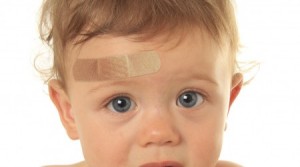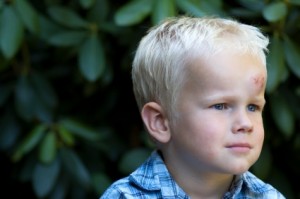
Minor head injuries, or bumps to the head, are common in children. If there has been no loss of consciousness, and there is no deep cut or severe damage to the head it is unusual for there to be any damage to the brain. Rarely, though, there may be bleeding within the skull which causes pressure on the brain, symptoms of which may take hours, or even days, to occur. Carers should be alert to these signs as they may indicate a serious condition needing urgent treatment.
WHEN TO CALL 999 OR SEEK IMMEDIATE HELP
If there has been any loss of consciousness
Fall from a height (> 3 metres) or high speed injury (road traffic accident, hit by projectile)
Blood or clear fluid leaking from ears or nose
Abnormal drowsiness or behaviour, confusion or problems understanding or speaking, or in nonverbal children inconsolable or inconsistently consolable crying
Seizure
Weakness in part of body, dizziness, loss of balance or uncoordinated movement
Problems with vision, such as blurred or double vision
More than one episode of vomiting
Headache which is not resolved with paracetamol, or which gets steadily worse
Inability to remember events leading up to or after the injury
WHEN TO SEEK LESS URGENT ADVICE (e.g. GP, minor injury or walk in centre)
If none of the above signs are present but
Fallen from a height greater than the child’s own height or greater than one metre
Fallen downstairs
Suspicion of deliberate harm (abuse)
Under one year old
Vomiting (but see above re more than one episode)
Known blood clotting disorder
Has consumed alcohol
WHEN IT IS APPROPRIATE TO KEEP WATCH AT HOME
If none of the above signs are present and
If there was no loss of consciousness
Minor bruising or grazing only
Cried immediately, but can be consoled and otherwise interacts normally

Observe the child for 2-3 days, or until symptoms have settled, if you become concerned about their behaviour or responses seek further advice. Encourage them to get plenty of rest and avoid strenuous activity. Pass on information about the event to other care-givers so that they can also observe the child.
WOUND CARE
Minor wounds can be cleaned with tap water. Bumps and swellings can be treated by applying a cold facecloth.
Larger cuts may need further treatment, but in the first instance stop the bleeding by applying pressure over the wound, using a sterile wound dressing or clean cloth.
